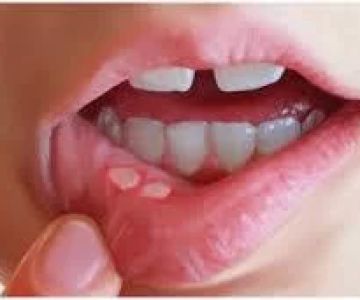What are the Common Medications Used to Treat Oral Ulcers?
Oral ulcers, also known as mouth sores, are a prevalent issue affecting many individuals across the United States. These painful lesions can arise due to a variety of reasons, including stress, nutritional deficiencies, or underlying health conditions. While primarily a discomfort, they can sometimes indicate more severe health concerns, thus warranting effective treatments. Understanding the common medications available, such as topical creams and mouthwashes, is vital for effective management and relief from these pesky sores.
Understanding Oral Ulcers
Oral ulcers emerge as shallow, painful sores that disrupt daily activities like eating and speaking. They vary in type, with canker sores being the most common non-contagious form. Factors such as hormonal changes, food allergies, and infections can contribute to their development. In the United States, approximately 20% of the population experiences recurring ulcers, necessitating an array of treatment options tailored to individual needs (ADA Research). The focus on effective management is essential, considering the disturbances these ulcers cause in general well-being and everyday functions.
Topical Creams and Their Uses
Topical creams are among the first line of defense against oral ulcers. They serve to alleviate pain and reduce inflammation directly on the sore itself. Commonly used topical agents include corticosteroids like triamcinolone acetonide (Kenalog in Orabase) and anti-inflammatory gels such as benzocaine. These medications form a protective barrier over the ulcer, easing the irritation caused by food and bacteria. Moreover, some creams possess antimicrobial properties to prevent secondary infection in these sensitive areas. The benefit of using topical treatments is that they provide localized relief, minimizing systemic side effects typical with oral medications.
Mouthwashes for Comprehensive Care
Mouthwashes provide a comprehensive approach to oral ulcer care by maintaining oral hygiene and offering antiseptic benefits. Antimicrobial rinses like chlorhexidine gluconate (Peridex) are used to reduce bacteria levels in the mouth, helping to prevent infection while promoting healing. Some mouthwashes, formulated with lidocaine, offer numbing relief which significantly reduces the pain associated with ulcers. Using a mouthwash regularly can help not only in treating existing ulcers but also in preventing future occurrences by establishing a clean oral environment.
Prescription vs. Over-the-Counter Options
Medications for oral ulcers come in both prescription and over-the-counter (OTC) varieties. OTC options include basic formulations like hydrogen peroxide-based rinses and aloe vera gels, providing simple and accessible relief. In contrast, prescription medicines often involve higher concentrations of active ingredients or specific compounds not available in OTC variants. For example, oral retinoids or systemic corticosteroids might be prescribed for severe or persistent cases that do not respond to standard treatment. The choice between these options often depends on the severity of symptoms and the underlying causes identified by dental professionals.
Emerging Treatments and Holistic Approaches
As the understanding of oral ulcers evolves, emerging treatments and holistic approaches gain popularity. Laser therapy, for instance, presents a non-invasive option with the potential to speed healing and offer pain relief. Similarly, dietary adjustments emphasizing vitamin intake, particularly B12 and iron, address deficiencies that could contribute to ulcer formation. Herbal remedies using licorice or chamomile extracts also exhibit promising outcomes in providing natural anti-inflammatory effects. Integrating these alternative methods with traditional medications can offer a more rounded management strategy for recurring or stubborn ulcers.
In conclusion, treatment of oral ulcers requires a multifaceted approach encompassing various medications and therapies tailored to individual needs. From topical creams that tackle direct pain to mouthwashes tackling underlying infection risks, each plays a pivotal role in managing this common oral ailment. It is crucial for individuals experiencing frequent ulcers to consult healthcare providers and explore the options best suited for their specific condition. Proactive management not only ensures quicker relief but also prevents potential complications, ultimately leading to improved oral health and quality of life.
For more insightful information on oral health and treatments, consider visiting Dentistry Toothtruth, your reliable resource for up-to-date dental care guidance and advice.




 The Toothery4.0 (209 review)
The Toothery4.0 (209 review) Monarch Dental & Orthodontics4.0 (593 review)
Monarch Dental & Orthodontics4.0 (593 review) Access Dental, Dentures & Implants4.0 (426 review)
Access Dental, Dentures & Implants4.0 (426 review) Amazing Family Dental5.0 (304 review)
Amazing Family Dental5.0 (304 review) Dental Kidz Club - Corona4.0 (186 review)
Dental Kidz Club - Corona4.0 (186 review) UofL Dental Associates - Dental Faculty Practice2.0 (36 review)
UofL Dental Associates - Dental Faculty Practice2.0 (36 review) The Importance of Oral Health Education During Pregnancy for a Healthy Pregnancy
The Importance of Oral Health Education During Pregnancy for a Healthy Pregnancy Best Tips for Brushing Your Teeth Properly for Healthy Gums: Essential Techniques for Oral Health
Best Tips for Brushing Your Teeth Properly for Healthy Gums: Essential Techniques for Oral Health Why Skipping Dental Checkups Can Lead to Bigger Oral Health Problems
Why Skipping Dental Checkups Can Lead to Bigger Oral Health Problems Advantages of Porcelain Dental Restorations
Advantages of Porcelain Dental Restorations How Can Diabetes Cause Tooth and Gum Problems? Preventing and Managing Oral Health Issues
How Can Diabetes Cause Tooth and Gum Problems? Preventing and Managing Oral Health Issues Healthy Habits for Promoting Good Oral Health and Hygiene: Tips for a Healthy Smile
Healthy Habits for Promoting Good Oral Health and Hygiene: Tips for a Healthy Smile